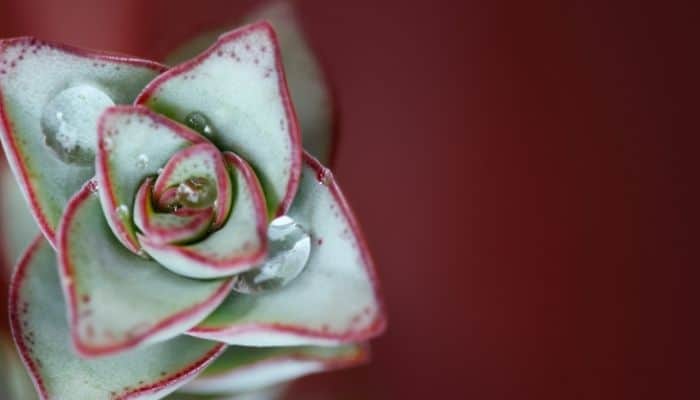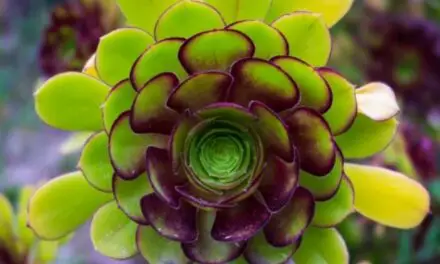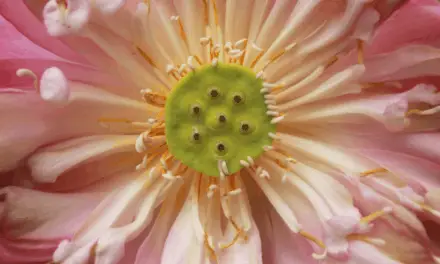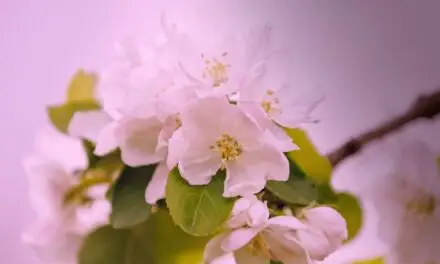Succulents look their best when their leaves are lush and green but on some plants, you’ll find a dusty-looking coating.
This dust often looks out of place and may lead you to wonder why it’s there at all.
Table of Contents
Why Do My Succulents Look Dusty?

Your succulent looks dusty because the plant produces a protective coating of epicuticular wax that resembles dust but also guards the plant against sunburn and pests.
Also described as “farina” or “bloom” or “glaucous”, this dusty-looking wax coating can be found on the stems, leaves of some succulents.
The outer layer of cells, or cuticle, of the epidermis of the plant form microscopic crystals of a waxy substance that forms a whitish or grayish film.
This film evenly and thinly coats the surface of many types of succulents and easily rubs off.
The farina is beneficial to the plant and cannot easily be produced again, so it’s best to leave it be and not touch the plant.
Why Do Succulents Produce Epicuticular Wax?
Succulents produce epicuticular wax because it helps protect them from sunburn and harmful insects. It also helps them to self-clean and to keep their leaves from drying out.
A Natural Sunscreen
In plants, such as some succulents, and some fruits, epicuticular wax or farina is believed to act as a sunscreen.
Succulents need full sun to thrive, but they also need protection from water loss.
The dusty-looking coating of wax protects the succulent’s leaves from sunburn and keeps them from drying out too quickly.
Studies of the Giant Chalk Dudleya, a succulent that grows in fissures on volcanic outcrops, have shown that the thicker the bloom, or glaucous coating, the higher the UV reflectivity of the plant.
Related Article: Does Touching Succulents Hurt Them? (Not Always)
A Self-Cleaning Mechanism
If your succulents have a full, healthy, wax coat, you’ll notice that water that gets on the leaves beads up and rolls off.
This is a self-cleaning mechanism known as the lotus effect.
Also called ultrahydrophobicity, this water-repellent feature is caused by the shapes of the crystals of wax and is found in several types of plants, and on the wings of some insects.
Unwanted substances, such as dirt particles and microbes, are picked up by the water droplets as they roll off the plant, cleaning the leaves.
Protection Against Pests
Another benefit that epicuticular wax provides is that it makes the surface of the plant slippery, and thus difficult for bugs to climb.
A pesky insect that wants to munch on the leaves may find them too difficult to climb and will have to look for food elsewhere.
Should I Do Something About The Farina?
Well, if the dusty look of your succulent is a natural protective coating it’s best to leave it be.
As you’ve seen above the wax is very helpful to your plant.
If the coating has been accidentally removed, during shipping, or from using horticultural oils to clean the plant or treat an insect problem, it may be best to keep the plant in full or partial shade at first then gradually acclimate it to full sun as it recovers part of its bloom.
To clean soil or other dry matter from your succulent without removing the farina, try blowing the dirt away or using a very soft brush, such as a makeup brush, to gently clean it.
For treating mealy bugs, make a solution of water and rubbing alcohol, and mist the infected leaves.
This usually leaves the bloom intact. Be sure to dry plants treated this way in full shade to prevent leaf burn.
What If The Dusty Look Is Not Farina?
Other things that could cause a dusty appearance on your succulents are mealy bugs and powdery mildew.
Mealy Bugs
Mealybugs are a far more common problem for succulents and cacti than powdery mildew is.
Mealybugs are scale insects that like warm, humid environments and they love to feed on new plant growth.
They secrete a white, wax-like substance to cover themselves with for protection.
The protective layer looks fuzzy and can eventually cover large areas of leaves and stems as the infestation grows.
This fuzzy coating is lumpier and thicker than the typical farina found on plants and is unevenly distributed, unlike the plant’s own wax coating.
Isolate infested plants immediately so the mealybugs don’t spread to your other plants.
Spraying the mealybugs with 70% isopropyl alcohol kills them quickly and appears to be perfectly safe for the succulents.
Powdery Mildew
Powdery mildew may appear as a white coating, or it may be gray and include round yellow, brown, or black growths.
Treat powdery mildew by removing infected leaves and treating the plant with a fungicide.
Final Thoughts
Epicuticular wax or farina is a fascinating and helpful substance that plants make to protect themselves from excess sun, dirt, germs, and insects, and should be left on your succulents whenever possible.




